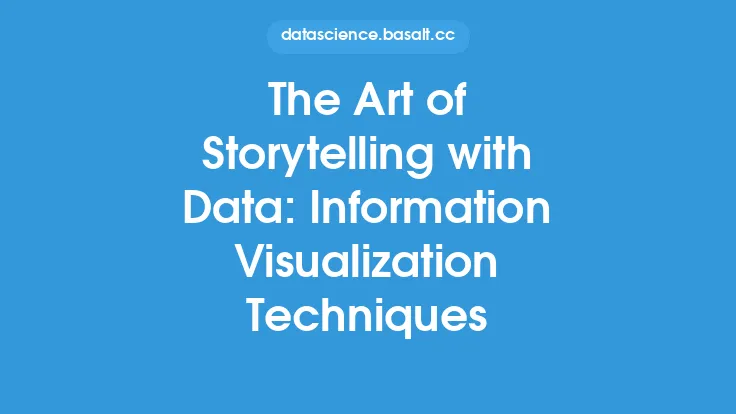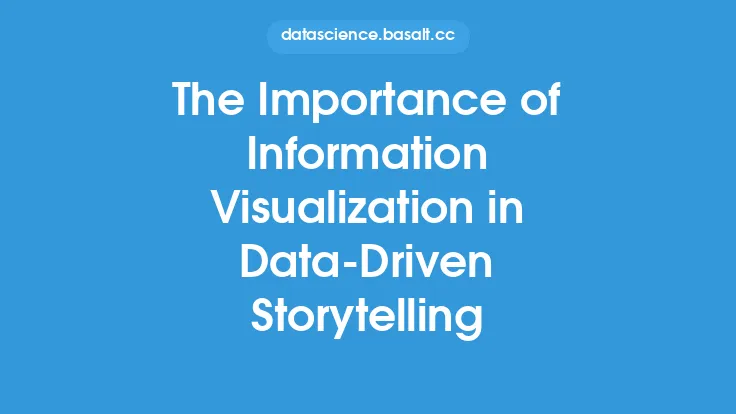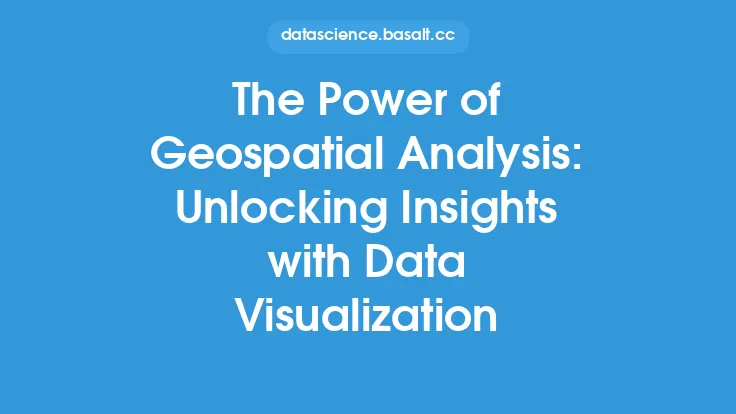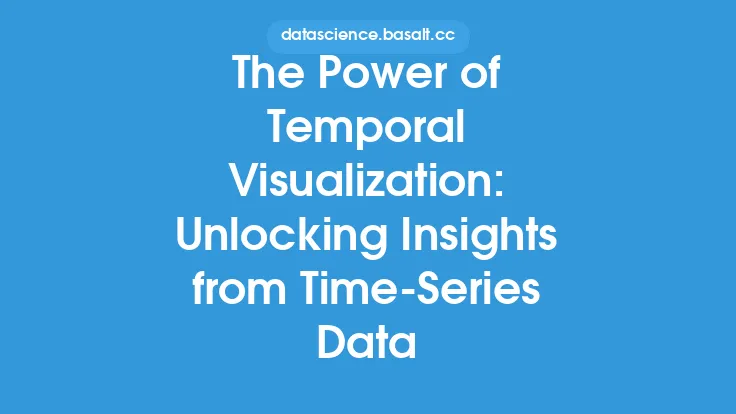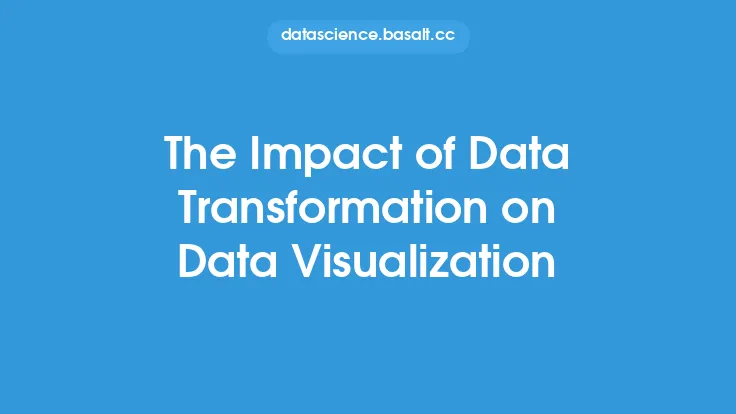The ability to transform data into insights is a crucial aspect of modern business and research. With the exponential growth of data, it has become increasingly important to develop methods that can effectively communicate complex information to both technical and non-technical audiences. Information visualization is a powerful tool that enables users to explore, analyze, and understand large datasets by leveraging the human brain's ability to process visual information more efficiently than text-based data. This field of study focuses on the use of computer-based, interactive, and dynamic visual representations of data to facilitate knowledge discovery, communication, and decision-making.
Introduction to Information Visualization
Information visualization is an interdisciplinary field that combines computer science, statistics, design, and cognitive psychology to create interactive and dynamic visualizations of data. The primary goal of information visualization is to provide a clear and concise representation of complex data, allowing users to identify patterns, trends, and relationships that may not be immediately apparent from the raw data. By using a variety of visual elements such as colors, shapes, sizes, and positions, information visualization enables users to explore and analyze large datasets in a more intuitive and engaging way.
Types of Information Visualization
There are several types of information visualization, each with its own strengths and weaknesses. Some of the most common types include:
- Scatter plots: used to display the relationship between two continuous variables.
- Bar charts: used to compare categorical data across different groups.
- Line charts: used to show trends over time or across different categories.
- Heat maps: used to display the relationship between two categorical variables.
- Network diagrams: used to visualize complex relationships between different entities.
- Tree maps: used to display hierarchical data and relationships.
Each type of visualization is suited to a specific type of data and analysis, and the choice of visualization depends on the research question, the type of data, and the intended audience.
The Process of Creating Effective Information Visualizations
Creating effective information visualizations involves several steps, including:
- Data preparation: ensuring that the data is clean, complete, and in a suitable format for visualization.
- Data analysis: using statistical and computational methods to identify patterns, trends, and relationships in the data.
- Visualization design: selecting the most appropriate type of visualization and customizing its appearance to effectively communicate the insights.
- Evaluation and refinement: testing the visualization with different audiences and refining it based on feedback and performance metrics.
The process of creating effective information visualizations requires a deep understanding of the data, the research question, and the intended audience, as well as a range of technical and design skills.
Technical Aspects of Information Visualization
Information visualization relies on a range of technical tools and technologies, including:
- Programming languages: such as Python, R, and JavaScript, which are used to create custom visualizations and interact with data.
- Data visualization libraries: such as D3.js, Matplotlib, and Seaborn, which provide pre-built functions and tools for creating common types of visualizations.
- Data visualization software: such as Tableau, Power BI, and Gephi, which provide user-friendly interfaces for creating and customizing visualizations.
- Big data technologies: such as Hadoop and Spark, which are used to process and analyze large datasets.
The choice of technical tools and technologies depends on the size and complexity of the data, the type of analysis, and the intended audience.
Best Practices for Information Visualization
To create effective information visualizations, it is essential to follow best practices, including:
- Keep it simple: avoiding clutter and unnecessary complexity in the visualization.
- Use color effectively: using color to draw attention, convey meaning, and create visual hierarchy.
- Use interactive elements: enabling users to explore and interact with the data in a more engaging way.
- Provide context: including relevant metadata, such as data sources, scales, and legends, to help users understand the visualization.
- Test and refine: evaluating the visualization with different audiences and refining it based on feedback and performance metrics.
By following these best practices, users can create information visualizations that are both effective and engaging.
Applications of Information Visualization
Information visualization has a wide range of applications, including:
- Business intelligence: using data visualization to support decision-making and strategic planning.
- Scientific research: using data visualization to explore and communicate complex scientific data.
- Education: using data visualization to teach complex concepts and principles.
- Journalism: using data visualization to tell stories and communicate news and information.
- Healthcare: using data visualization to analyze and communicate medical data.
The applications of information visualization are diverse and continue to grow as the field evolves and matures.
Future Directions for Information Visualization
The field of information visualization is constantly evolving, with new technologies, tools, and techniques emerging all the time. Some of the future directions for information visualization include:
- Virtual and augmented reality: using immersive technologies to create more engaging and interactive visualizations.
- Artificial intelligence: using machine learning and AI to automate the process of creating and customizing visualizations.
- Big data: using information visualization to analyze and communicate large and complex datasets.
- Collaboration and sharing: using web-based platforms and tools to facilitate collaboration and sharing of visualizations.
- Evaluation and assessment: developing new methods and metrics to evaluate the effectiveness and impact of information visualizations.
As the field continues to evolve, we can expect to see new and innovative applications of information visualization in a wide range of domains.

